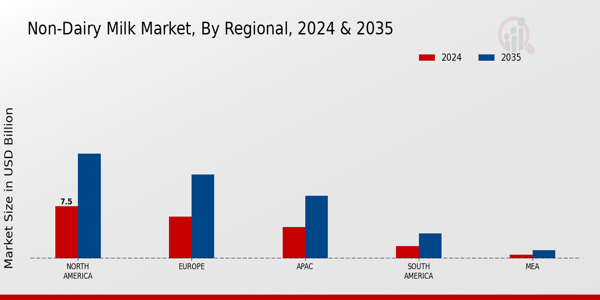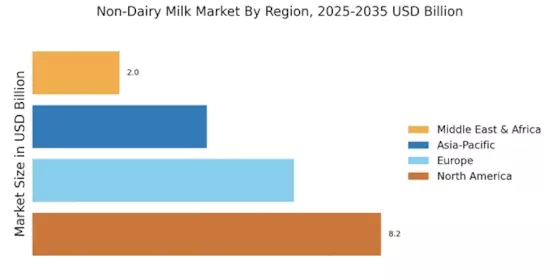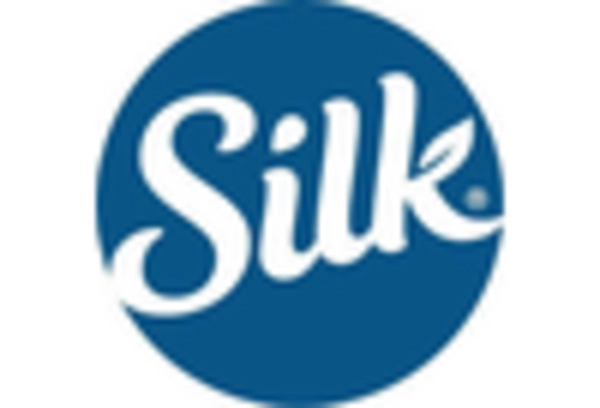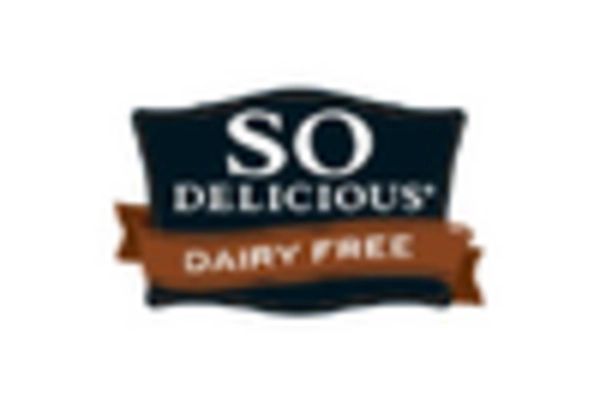Diverse Flavor Profiles
The Non-Dairy Milk Market is witnessing a notable trend towards flavor innovation, which is attracting a broader consumer base. Manufacturers are increasingly experimenting with various flavors, such as vanilla, chocolate, and even unique blends like matcha or turmeric. This diversification in flavor offerings caters to the evolving tastes of consumers, particularly younger demographics who seek variety in their dietary choices. The introduction of flavored non-dairy milk products has the potential to enhance market penetration, as it appeals to both health-conscious individuals and those looking for indulgent options. As a result, the market is expected to expand, with flavored non-dairy milk projected to account for a significant share of overall sales.
Environmental Sustainability
The Non-Dairy Milk Market is increasingly influenced by the growing emphasis on environmental sustainability. As consumers become more aware of the ecological impact of dairy farming, they are turning to non-dairy alternatives that are perceived as more sustainable. The production of non-dairy milk typically requires fewer natural resources, such as water and land, compared to traditional dairy. For instance, almond milk production uses significantly less water than cow's milk. This shift towards environmentally friendly products is not merely a trend; it appears to be a fundamental change in consumer behavior, with many willing to pay a premium for sustainable options. This focus on sustainability is likely to drive further growth in the non-dairy milk sector.
Innovative Packaging Solutions
The Non-Dairy Milk Market is also being shaped by advancements in packaging technology. Innovative packaging solutions, such as eco-friendly cartons and resealable pouches, are becoming increasingly popular among consumers. These packaging options not only enhance the shelf life of non-dairy milk products but also align with the sustainability values of many consumers. The convenience of packaging plays a crucial role in consumer purchasing decisions, as busy lifestyles drive the demand for easy-to-use products. As manufacturers continue to invest in sustainable and user-friendly packaging, it is likely that the non-dairy milk market will see continued growth, appealing to environmentally conscious consumers.
Health Benefits of Non-Dairy Milk
The Non-Dairy Milk Market is experiencing a surge in demand due to the increasing awareness of health benefits associated with plant-based alternatives. Consumers are gravitating towards non-dairy options, such as almond, soy, and oat milk, which are perceived as healthier alternatives to traditional dairy. Research indicates that non-dairy milk often contains lower calories and saturated fats, appealing to health-conscious individuals. Additionally, the presence of vitamins and minerals in these products, such as calcium and vitamin D, enhances their attractiveness. The market for non-dairy milk is projected to grow at a compound annual growth rate of approximately 10% over the next five years, reflecting a shift in consumer preferences towards healthier dietary choices.
Rise of Veganism and Plant-Based Diets
The Non-Dairy Milk Market is significantly influenced by the rise of veganism and the adoption of plant-based diets. As more individuals choose to eliminate animal products from their diets, the demand for non-dairy milk alternatives has surged. This trend is not limited to vegans; many consumers are adopting flexitarian lifestyles, incorporating more plant-based options into their meals. The increasing availability of non-dairy milk in retail outlets and cafes further supports this trend, making it easier for consumers to access these products. Market data suggests that the non-dairy milk segment is expected to capture a larger share of the overall milk market, reflecting a shift in dietary preferences towards plant-based options.



















Leave a Comment